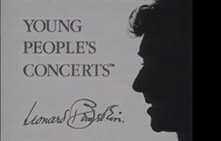GRANTS, NM – Who is Paul Hindemith? I don’t doubt that some of you are familiar with this musician- composer, and I have enjoyed learning about him from Leonard Bernstein. Tribute was paid to Mr. Hindemith with a “New York Philharmonic Young People’s Concert: The Genius of Paul Hindemith”, February 23, 1964. Once again, as every Friday afternoon at 4 p.m., The Cibola Arts Council has presented another concert in its music appreciation program.
Bernstein praised Hindemith as “a true master in the great German tradition, a worthy successor to the long line of great German composers that included Bach, Beethoven, Brahms, and Wagner.”
“He was my idea of the total musician. He played music, wrote it, taught it, breathed it, he played jazz in cafés, he was concertmaster of an orchestra, he played the viola in a string quartet, he wrote books about music. But mainly, he wrote music every kind of music. Big and little, serious, light, noble and jazzy, hard and easy, music for professionals, for amateurs, and for children. He was a modern composer, but he was certainly never what we call an angry young man. He had too much love in him for that.”
Despite Bernstein’s own high regard for Hindemith, his compositions were not always appreciated, and Bernstein immediately announced the complaints and that he was going to prove them wrong. In his lesson about atonality I realized that this concert was about a different sort of music.
Should I define atonal for you? Again, I must quote Bernstein, “atonal simply means using all the 12 different notes of the chromatic scale in such a way that no one note ever seems more important than another. In other words, in atonal music, no idea of a key or a home base is ever established, as it is in the regular diatonic seven note scale.”
The maestro continued gushing over Hindemith, his novel expressions, and comparing them to some of Bach’s pieces which were written to develop a pianist’s finger strength in a way that would not seem a chore, but that he would enjoy playing.
Here is another musical definition, cross-relations. Bach was known to use these, and so did Hindemith. A cross-relation is also known as a false relation that occurs when a pitch in one voice is followed by a chromatic alteration of the same pitch in another voice. (learnmusictheory.net) To prove that Hindemith’s musical ear was as pleasing as other great composers, Bernstein conducted the New York Philharmonic Orchestra in the composition Kleine Kammermusik, or Little Chamber Music for five wind instruments. This piece proved to listeners that Hindemith’s work was not harsh nor dissonant, but instead they were spritely, lively, cheerful.
Bernstein finished the concert with a three-part symphony, Mathis der Maler (Matthias the Painter), by Hindemith, written during the rise of the Nazi party in the 1930s. The painter is Matthias Grünewald, a very famous German painter who lived and worked way in the early 16th century.
Hindemith related to the painter’s own personal struggle of 400 years earlier. It was religious, not political, but both men faced a choice. Grünewald’s conflict was of loyalties. Torn between the Protestant peasants and the Catholic nobles, his sense of beauty as an artist and his sense of duty as a citizen. He was forced to choose between his loyalty to the struggle which was a cause of war and crisis and bloodshed, or should he maintain a distance, stay home and paint?
Hindemith’s own struggle was similar. While the Nazis were turning his country into a book-burning war zone, where anyone who disagreed with them was imprisoned, should the composer fight, or should he continue to write his beautiful works for wind, string, and pianos? Music that had the government’s approval?
The Nazi party officials did not like Hindemith’s own original work, and the composer did not agree with their ideas. He made the choice to disagree, and his opera, Matthias The Painter, was written in protest, in his own style of beautiful music. In 1938 Hindemith finally left Germany forever.
Each movement of the opera is represented by a painting copied from the titles of three famous pictures that Matthias Grünewald painted to adorn the altar of the church at Isenheim. The first picture and the first movement of the symphony is called Engelkonzert, or Angel Concert. The painting is of the virgin and child being serenaded by angels.
The opera was chosen to demonstrate Hindemith’s style with tunes that are “charming and jolly and rhythmic and dancing.”
The second movement is sad, and short, only four minutes: II The Entombment, Grablegung, a Grünewald painting of the body of Christ being laid in the tomb and accompanied by mourners.
In part III, The Temptation of Saint Anthony, the saint is shown being tortured by all sorts of grotesque demon-like creatures. It concludes joyously with the representation of “the salvation of St. Anthony, of Grünewald, and of Hindemith, and eventually of Germany itself.”
I hope many of you readers will attend these concerts and lend us your own thought on Bernstein’s comments and the compositions.


